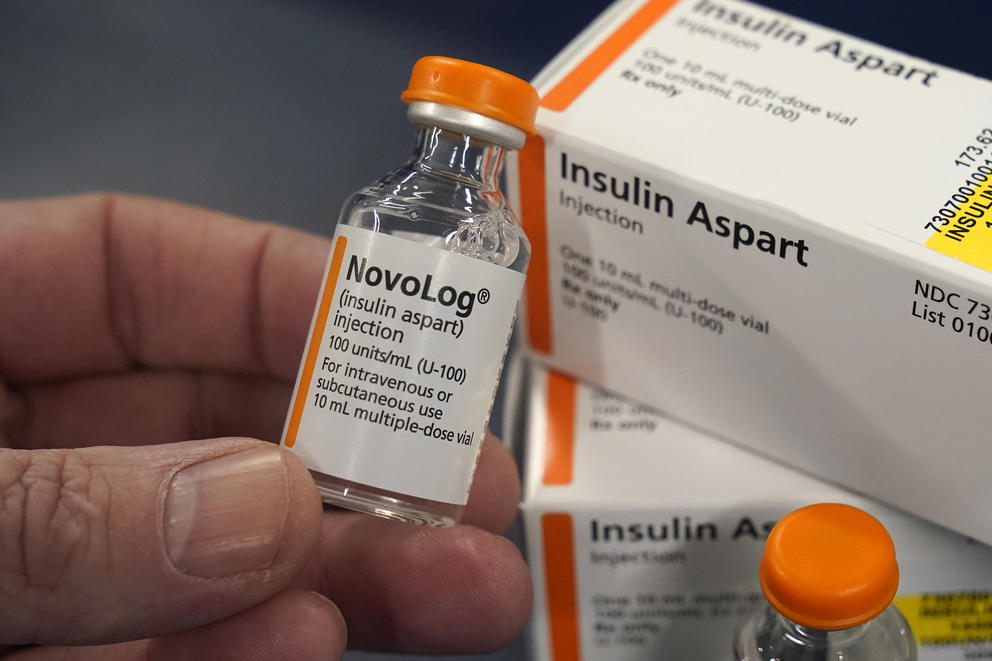“Having lost my job in 2013, I was on COBRA insurance and couldn’t afford insulin and was forced to ration,” said Wren. “I had to borrow insulin from my father, and without that relationship, I might have died. I know people that have died. I know thousands that have rationed … these stories are not unique. They’re commonplace.”
Managing diabetes can be complex and expensive, and for people who self-manage the disease — or who are caregivers for family members who have it — navigating the array of logistical and financial burdens that comes with it is a lifelong challenge, from the price of emergency care to filling prescriptions for insulin. Insulin is especially important for people who have type 1 diabetes, an autoimmune condition often diagnosed in childhood, in which a person’s body stops producing insulin. But it can also be a component of treatment for type 2 diabetes, which develops over time due to insulin resistance and is more common in people over age 45.
According to the American Diabetes Association, 9.7% of adults in Washington have diabetes and 33.7% have prediabetes, meaning their blood glucose levels are elevated but not yet to a level that would lead to an official diagnosis. The former face elevated health care costs: about 2.3 times the amount incurred by people who don’t have diabetes. In 2017, direct medical expenses for Washington patients diagnosed with diabetes totaled around $5 billion.
One of these costs is insulin.
While critical to keeping patients alive and preventing serious health problems like heart attack, stroke, and kidney failure from developing, the drug can cost patients hundreds of dollars. At the 2020 hearing, Olympia resident Amber Markland estimated that her son’s insulin cost her family $900 a month. “I’m in charge of keeping Levi alive with a vial of insulin every single day, three to six times per day,” she said. “Our family carries the financial load of his diabetes because Levi doesn’t get a choice. Without insulin, he dies.”
In the United States, the average cost of insulin per unit is more than 10 times the price internationally. The price to consumers varies depending on the type of insulin and mode of delivery, but an analysis from the drug pricing website GoodRx found that per-package costs for mixed insulin — a combination of long- and short-acting insulins — ranged from $42.96 to $704.41, based on claims from October 2022 to September 2023.
In Washington, a $35 cap on monthly supplies of insulin is now making the drug more affordable and more accessible to people who need it — and who were paying enormous sums previously. While her daughter’s insulin is free under current health insurance coverage, said Rose Sarro, a pharmacy technician in Pullman, “As a parent I remember getting a bill back in 2016 that was nearly $600 after insurance for one month of insulin and test strips.”
Hearing about prices like that motivated Keiser to take on the price of insulin, sponsoring a series of proposals that would lead to the permanent cap on insulin prices, beginning with 2020’s Senate Bill 6087, the bill Wren testified in support of, which capped out-of-pocket expenses for insulin at $100 a month.
In 2022, a second bill reduced costs even further, with the expectation that federal action would impose new limits on the drug nationally. “We cut it to $35, because Congress was supposed to be doing that, but then they didn’t and only limited it to Medicare beneficiaries,” leaving everyone else behind, said Keiser. In 2023, a bill making the $35 cap permanent passed both chambers of the Legislature and was signed into law by Gov. Jay Inslee on March 31.
Insulin wasn’t always so expensive. In 1923 the patent for the drug was sold to the University of Toronto for $1, with the goal of making it universally available to anyone with diabetes, who, before its discovery in 1921, often lived shorter lives with few options for managing their blood sugar levels. Insulin changed that.
After scientific experimentation on animals isolated the cause of diabetes in the pancreas, surgeon Frederick Banting and his assistant, Charles Best, successfully harvested insulin from the pancreas of a dog for the first time. In 1922, insulin was injected into its first patient, 14-year-old Leonard Thompson, stabilizing his blood sugar levels. It wasn’t long before pharmaceutical giants like Eli Lilly and the company now known as Novo Nordisk began commercially manufacturing the drug, which the American Diabetes Association would go on to describe as “a medical marvel in the world of diabetes.” Insulin revolutionized diabetes treatment and helped people with the chronic illness stay alive.
But as insulin manufacturing has grown into a global business, companies that produce it have moved away from the initial intent that it be widely accessible, and prices for the drug have risen exponentially. As recently as 2020, Washingtonians with diabetes reported major challenges in gaining consistent access to the drug, with costs reaching hundreds of dollars for a 30-day supply.
Today Keiser says she hears different stories from patients, who can now afford the drugs they need to stay alive. But she said more policies should be implemented to broaden access even further, and sees a model in a Minnesota policy, Alec’s Law. Named for Alec Smith, a 26-year-old who died from insulin rationing, the law mandates that eligible people have access to a 30-day emergency supply of insulin for $35. Less than a year since that law went into effect in 2021, the Minnesota Pharmacy Board reported that 465 people had used it to obtain emergency supplies of insulin.
While these policies make insulin more accessible, variations in health insurance plans mean not everyone in states with price caps has universal access to $35 insulin supplies. Sarro, who on top of managing her daughter’s diabetes care has experience filling insulin prescriptions in her role as a pharmacy technician, said that red tape remains for some patients.
A year ago when the $35 cap was already in place, Sarro said her pharmacy tried to fill an insulin prescription for a patient insured under military provider TriCare. The patient was charged hundreds of dollars. “They had filled at our pharmacy before no problem, so we called insurance to see what the issue was and remind them that our state limits patient out-of-pocket,” she said.
She and her co-workers were told that because the patient’s insurance allowed the prescription to be filled for under $35 via mail-order pharmacy or at the closest military base, the plan could charge full price if the patient filled the prescription at a local pharmacy instead. “I told the patient to call and request an override for a one-time fill at a lower dose due to medical need,” Sarro said.
She also said that insurance changes would sometimes result in patients being forced to shift from one insulin formulation to another. “So you get switched between Humalog and NovoLog, even though each works a bit differently in each diabetic so it can cause instability for weeks and/or months as the patient and doctor fiddle with the ratios to get the correct formulation,” she said.
In the upcoming 2024 legislative session, Keiser will introduce a bill, modeled on Alec’s Law, that will solve problems like the one Sarro’s patient encountered.
Keiser is also planning to sponsor a measure applying cost-sharing rules like the ones in her insulin legislation to epinephrine auto-injectors, which are used to treat life-threatening allergic reactions and which public schools require families to provide, despite their expense. Epinephrine, said Keiser, is in some ways like insulin: “It’s a very old drug. It isn’t all that expensive in itself, but the mechanics of injecting it are what causes ridiculous prices,” she said. Her proposed bill would cap the price at $60 for a two-pack of the auto-injectors, which currently cost about $300.
Keiser said she has no expectation that the federal government would provide a solution to offset the cost of high drug prices to consumers. And in the absence of that, she said, “We have to do it ourselves.”




